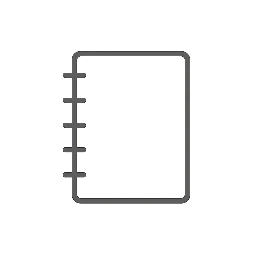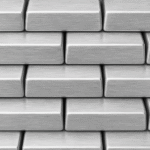Finding reliable laminate flooring repair services near me can save time and ensure quality results for damaged or worn floors. Many local experts specialize in fixing scratches, water damage, and warped boards, offering tailored solutions to restore the floor’s appearance and functionality. The best approach is to seek experienced professionals who understand laminate materials and provide thorough, efficient repair options in your area.
Repair needs vary from minor scratches to significant damage, and skilled technicians offer both repair and replacement services as needed. Access to trusted local contractors can be found through trusted platforms or service listings, making it easier to choose the right provider based on experience and customer feedback.
By addressing laminate flooring issues promptly with qualified help, homeowners can maintain their floor’s durability and aesthetic value. Knowledgeable repair services focus on delivering seamless finishes that blend smoothly with existing flooring for a consistent look.
Finding Professional Laminate Flooring Repair Near Me
Locating a skilled professional for laminate flooring repair involves understanding available local services, evaluating repair specialists, knowing typical costs, and confirming warranty coverage. Knowing these aspects helps in making an informed choice that balances quality, price, and reliability effectively.
Local Laminate Flooring Repair Services
Local repair services for laminate flooring range from small independent contractors to established flooring companies. These providers usually offer repairs for scratches, chips, water damage, and panel replacement. Many services advertise on platforms like Kijiji or Yelp, where customer reviews and service ratings provide insight into their reputation.
In cities like Toronto, Vancouver, and Calgary, there is a variety of specialists skilled at both minor touch-ups and complete floor restoration. Choosing a local expert can reduce travel costs and ensure faster response time. Some providers also offer on-site assessments, which can provide a more accurate diagnosis of the problem and tailored repair options.
How to Choose the Right Flooring Specialist
Choosing the right laminate flooring specialist requires checking credentials, experience, and customer feedback. Verified licenses or certifications ensure the contractor meets industry standards. Experience confined to laminate flooring is preferable since techniques differ from hardwood or vinyl repairs.
Requesting references and viewing before-and-after photos helps assess the quality of previous work. It is important to confirm that the specialist uses high-quality materials suited for your floor type. Clear communication about timelines, repair methods, and potential disruptions is essential for a smooth service experience.
Costs and Estimates for Laminate Repairs
Repair costs for laminate flooring depend on the type and extent of damage. Minor repairs like scratch removal or small chip fixes typically range between $50 and $150. More extensive repairs, such as replacing damaged planks or addressing water damage, can cost between $200 and $600 or more.
Many contractors offer free or low-cost estimates based on an on-site evaluation. It is advisable to obtain multiple quotes to compare prices and included services. Itemized estimates that clarify material costs, labor fees, and additional charges help avoid surprises.
| Repair Type | Estimated Cost Range |
| Scratch Removal | $50 – $100 |
| Chip/Minor Damage | $75 – $150 |
| Plank Replacement | $150 – $400 |
| Water Damage Repair | $200 – $600+ |
Warranty and Service Guarantees
Reliable laminate flooring repair services usually provide warranties on both labor and materials. Warranty periods vary but commonly span 6 months to 2 years. A written guarantee protects the customer if issues recur after repair, ensuring the contractor will address problems without extra cost.
It is crucial to ask for detailed warranty information before hiring. Some warranties exclude damage caused by moisture or improper maintenance. Clarifying these terms upfront helps set realistic expectations and provides protection against future expenses related to repairs.
Common Laminate Flooring Issues and Solutions
Laminate flooring can face specific problems that affect its appearance and durability. Many issues are fixable with basic tools and materials, allowing homeowners to restore their floors without full replacement. The focus is often on water damage, surface scratches, and structural warping.
Repairing Water Damage
Water damage is a common problem caused by spills, leaks, or high humidity. When laminate soaks up moisture, it can swell, warp, or develop buckling, especially around seams. Immediate action is necessary to prevent further damage.
To repair, first dry the area thoroughly using fans or dehumidifiers. For minor swelling, placing a heavy object on the damaged boards can help flatten them back into place. If boards are severely warped or damaged, removing and replacing the affected planks is usually required. Applying a water-resistant sealant after repair can reduce future risk.
Regularly checking for leaks and promptly wiping spills prevents most water problems.
Fixing Scratches and Dents
Scratches and dents are typical due to foot traffic and moving furniture. Minor scratches can often be repaired with laminate-specific repair kits, which include wax sticks, putty, or markers matched to floor color. These fill in and conceal the damage.
For deeper scratches or larger dents, replacing individual boards is more effective. Light sanding is usually not recommended, as laminate has a thin wear layer that can be damaged.
Using furniture pads and maintaining a clear floor reduces the chance of new scratches.
Addressing Warping and Buckling
Warping and buckling happen when laminate boards expand due to moisture or improper installation with insufficient expansion gaps. These issues cause uneven surfaces and raised edges, making floors unsafe and unattractive.
Small buckling can be resolved by removing floor moldings and allowing boards to contract. In severe cases, affected boards need to be replaced. Proper installation requires leaving a gap around the room perimeter for expansion and ensuring a moisture barrier is in place, especially over concrete subfloors.
Routine humidity control and monitoring help prevent warping over time.









Leave a Reply